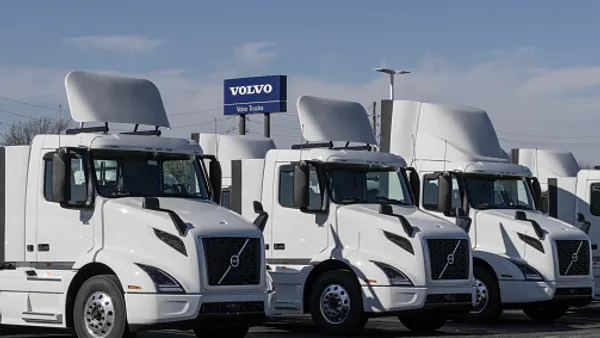Dive Brief:
- The ongoing trade war between the U.S. and China, along with recent weather and disease trends affecting global agriculture, has brought John Deere executives to abandon previously planned production expansion plans, executives said on the company's third-quarter earnings call Friday.
- "North American customer sentiment has since deteriorated only due to uncertainty over market access, but also due to weather and the demand impact of African swine fever as these challenges persist, we are now beginning more aggressive action on our cost structure to create a more efficient and nimble organization," said CFO Ryan Campbell on the call.
- The company will look to differentiate its investments, improve organizational efficiency and possibly decrease its operational footprint to maintain profitability despite ongoing stressors. John Deere has already taken some "targeted actions" to cut cost and expects to cut an additional $25 million in the fourth quarter.
Dive Insight:
Beginning in 2017, John Deere entered investment mode, executives said. Since January 2017, the OEM made six acquisitions in software, precision agriculture and robotics, manufacturing, and services in the U.S., Germany, Spain and Argentina, according to Crunchbase. Mid-2018, John Deere's order book was looking strong for 2019.
But now, after investing in innovation, the company must cut back internal costs in order to make good on its long-term commitment to margin growth. John Deere already announced in June it would cut product by roughly 20% from 2018 levels. Now the cost-cutting will hit not just production, but day-to-day operations too — executives said they would go deeper into the details of cost savings on their fourth-quarter call.
In response to analyst concerns that these moves to curtail costs could tamp down innovation, Director of Investor Relations Josh Jepsen said, "the ability to focus and prioritize" would be key to keeping John Deere's long term goals on track.
The weather Campbell referred to on his list of market stressors was a very wet spring in the Midwest that not only put a wrench in agriculture logistics but also prevented planting on 19 million acres of land in the corn belt, according to recently released figures from the USDA.
"Higher levels of uncertainty regarding final planted and harvested acreage, yield, and [market facilitation payments (MFP)] details have contributed to wide swing in farmer sentiments throughout the season," said John Deere Chief Economist Luke Chandler.
Raising prices somewhat — roughly 3% — an increase executives called "well within bounds and ... within our historical ranges" — is also part of the plan to ride out the market forces keeping farmers from making big equipment buys.
Campbell said the cutbacks will put John Deere in the best position to capitalize on demand for replacement equipment, whenever that may be.













